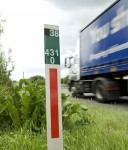If you were the first person onto the scene of an accident, would you know what to do? Could you help a fellow driver and save a life? And would you know how to stay out of danger?
The Daily Telegraph reports that up to 46 per cent of road traffic fatalities could be prevented if the right first aid assistance was available in those first moments. Doing the right thing could literally be the difference between life and death but very few of us would know exactly what to do in this situation.
Now, a new scheme is aiming to change that by providing training and advice for drivers about what to do if they arrive on the scene of an accident. Keep reading to find out more…
New scheme aims to train 60,000 drivers
A not-for-profit community company backed by the Association of Chief Police Officers, Association of Ambulance Chief Executives, Chief Fire Officers’ Association and the senior Traffic Commissioner for Great Britain has launched training for drivers so they know what to do in the event of a roadside emergency.
The scheme, Driver First Assist (DFA), requires motorists to go on a one day course to learn the skills to manage a crash scene and to help victims in the vital time before emergency services arrive. Any driver can attend, and the group is hoping to train 60,000 people in order to make a ‘significant impact’ on reducing fatalities.
So, what are the key elements of the training? Keep reading to find out…
The key elements to helping at an accident scene
DFA instructor Steve Rounds says: “You’re not superman or superwoman. You can only do what you can do but you will be able to make a difference”.
The first step to dealing with a roadside emergency is to provide ‘timely and accurate information’ to the emergency services. This includes being accurate about the scale of the accident – not exaggerating the seriousness – and the location.
For example, drivers should use motorway marker posts (positioned every 100 metres) and Driver Location Boards (every 500 metres and visible from any point on a motorway) to pinpoint their position. There are similar posts on dual carriageways.
These marker posts consist of two numbers, such 24/6, which allow the location to be established unequivocally, and give emergency services valuable information about where best to enter and exit a motorway or dual carriageway to save time. 24/6 reads as ‘twenty four over six’. This actually refers to 24km, 600m from a reference start point – usually the beginning of a motorway.
You also have to minimise the risk to yourself. Mr Rounds says: “The most important person to keep safe is yourself.” This includes looking out for potential hazards including traffic, electrocution, fire, chemicals and debris.
You should always position your car carefully at an accident scene so approaching motorists can see your tail lights and turn on your hazard warning lights.
Other vital tips that the course teaches include how to manage shocked bystanders, how to protect accident scenes in each lane of a motorway and even how to identify Hazchem warning plates.
First aid also important to saving lives
The remainder of the DFA course involves teaching drivers about basic first aid including CPR, stopping bleeding and applying bandages.
“If they’re not breathing, get them out of their vehicle on to a firm surface for CPR,” says Steve – even if they may have a broken back or neck. “If they’re not breathing or their heart has stopped they’ll die anyway. All we ask is that you make a risk assessment and do what you can. If you feel you can get in there and help save a life, do. If you assess the situation and feel you can’t, don’t.
“But whatever you do – and before you start helping – get that timely and accurate call into the emergency call centre. Unless they know where you are, the cavalry will never come.”

